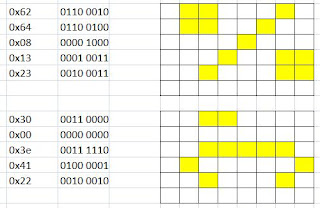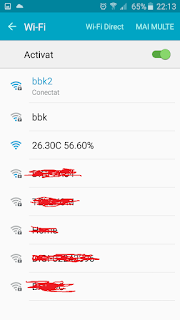Because, I realize in original program I haven't all characters I need, I "reverse engineer"-ing file with characters using Hexadecimal to Binary Converter to made new charactes:
So, character are vertical and from up to down. so I design my characters:
Now, my character file has new characters 😆
For not be problems, I remane my file as and put near original file
So, for testing, I simulate al cases:
- low humitity (< 10%)
- normal humidity
- 2-digit negative temperature:
- 1-digit negative temperature:
- 1-digit positive temperature:
- 2-digit positive temperature:
Using my /mini_clock_1_3 sketch, I made matrix mini clock with alarm, thermometer and hygrometer
I use DHT22 (AM2302) sensor so sketch is
and if you have DHT11 just change to
I use RTC with DS3231, but work without changes with DS1307 (note; DS3231 is more accurate than DS1307)....













































